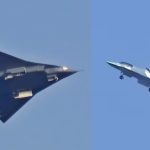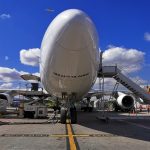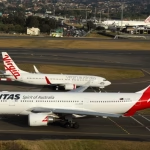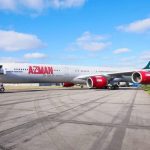Singapore Airlines (SIA) has experienced a historic turnaround in its financial situation, achieving its highest net profit in its 76-year existence, despite the challenges posed by the COVID-19 pandemic. This remarkable change of course is attributed to a series of strategic decisions made during the period of the health crisis.
At the beginning of the pandemic, SIA, along with its subsidiary Scoot, mobilized to keep most of its staff and operational fleet. This proactive approach allowed both airlines to quickly activate their resources once the demand for air travel began to recover.
When Singapore fully reopened its borders in April 2022 and restrictions on international flights began to relax, SIA and Scoot were well-positioned to resume operations with little notice. As a result, both airlines were able to capitalize on the pent-up demand for air travel.
By March 2023, the passenger capacity of the SIA Group had reached 79% of pre-pandemic levels, surpassing the 58% of regular international services of airlines in the Asia-Pacific region. In total, SIA and Scoot transported 26.5 million passengers, six times more than the previous year. The passenger load factor also rose to a historic 85.4%, an increase of 55.3 percentage points.
Group revenues increased by SGD 10.16 billion (EUR 6.983 billion, +133.4%) compared to the previous year, reaching a record figure of SGD 17.775 billion (EUR 12.217 billion). Despite a decrease in demand for air freight, freight transport revenues remained 83% above pre-COVID-19 levels.
These notable figures translated into a record net profit of SGD 2.157 billion (EUR 1.482 billion), compared to the net loss of SGD 962 million (EUR 661 million) the previous year. The financial turnaround of the SIA Group, they highlighted, is a clear demonstration of the effectiveness of its strategic initiatives and the dedication and sacrifice of its employees.
SIA’s strategic focus was not only limited to staff and resource management, but also extended to its fleet of aircraft. By the end of March 2023, the Group’s operational fleet consisted of 195 aircraft, 188 of which were passenger and 7 cargo. With an average age of six years and nine months, the Group’s fleet is one of the youngest in the aviation sector, allowing it to improve operational efficiency and achieve the Group’s decarbonization objectives. In parallel, it closed a deal with Boeing to change an order of three 787-9s for three 787-10s and cancel eight 737-8s, keeping its order book at 100 aircraft.
As for routes, SIA and Scoot have been expanding and adjusting their services to meet growing demand. For the summer season in the Northern Hemisphere (from March 26 to October 28, 2023), the Group plans to expand its services to China and add additional flights to Barcelona, Frankfurt, and Rome.
As of March 31, the group’s passenger network covered 109 destinations in 36 countries and territories. SIA served 74 destinations, while Scoot served 58. The cargo network included 118 destinations in 38 countries and territories. However, in July Scoot will stop flying to Gold Coast (Australia), and in October SIA will do the same with Vancouver, Canada.
Looking ahead, the SIA Group remains optimistic despite geopolitical and macroeconomic uncertainties, as well as cost inflation. The demand for air transport remains strong and is expected to continue in the first quarter of fiscal year 2023/24, when it will reach capacity levels of 83%, partly thanks to the recovery of air transport in East Asia.













